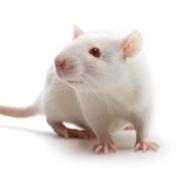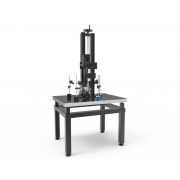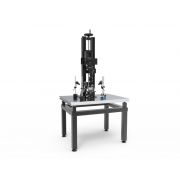Research&development - Why iPSC technology is vital to cardiac research
Medical researchers are continually working on ways to reduce those numbers by developing new technologies that can combat premature deaths from cardiovascular diseases. Although animal models are promising tools in disease modeling, the human heart has a significantly more complex structure and biochemistry, which is a difficult issue scientists are working on overcoming.
Induced pluripotent stem cells (iPSCs) are essential to numerous different medical research fields, one of which is cardiac research. iPSCs are a valuable and advantageous development in medical research because of their ability to differentiate into any specific cells we would like and because iPSCs can come directly from a human patient’s adult cells (1).
What are iPSCs?
iPSCs are a type of pluripotent stem cell — master cells that can differentiate into any cell or tissue the body needs — that are generated directly from somatic cells (1). They have become vital tools to model biological processes, particularly in cell types that are difficult to access from living donors.
Most people have heard of embryonic stem cells, which are one variation of pluripotent cells used to replace or restore damaged tissues. iPSCs differ from embryonic stem cells in that iPSCs are adult cells, while embryonic stem cells are stem cells that are found in preimplantation stage embryos. However, iPSCs are genetically modified to work like embryonic stem cells.
The development of iPSCs has been helpful because no embryos are needed, which reduces any controversy surrounding the creation and use of stem cells. iPSCs from human donors are also more compatible with their patients than animal iPSCs, making them even closer to their embryonic cousins.
The Japanese inventor of iPSCs, Professor Shinya Yamanaka, earned a Nobel Prize in 2012 for his creation primarily due to the medical and research implications the technology holds. The Nobel Prize was granted “for the discovery that mature cells can be reprogrammed to become pluripotent,” according to a 2012 press release (2).
What Can iPSCs Do?
A lot. iPSCs are highly useful in drug development and modeling of diseases. iPSCs might also help in transplantation medicine because the tissues developed from iPSCs are nearly an identical match to the cell donors, which can potentially reduce the chances of rejection by the immune system (3). In the future, and with enough research, it is quite possible to perfect the iPSCs technology which can efficiently reprogram cells and repair damaged tissues throughout the body. In addition, 3D bioprinting in regenerative medicine is certainly a hot area for iPSC technology which is able to print a specific tissue/organ with patients’ “bio-ink”. This could save a lot of time and resources given the fact that rejection and organ shortage are big issues in organ transplantation (6).
iPSC technology does not require the need for embryos and can be made to match specific patients, making them extremely useful in both research and medicine. Every individual with damaged or diseased cells can have their pluripotent stem cells created. Although more research is needed, the use of iPSCs in therapeutic transplants has been minimal.
One of the most significant areas where iPSCs are currently being used is in cardiology research.
iPSC can also work with optical mapping technology to detect the electrical activity, no matter how the iPSC has differentiated. Optical mapping technology is a technique that examines how cardiac arrhythmias works in a patient. Optical mapping technology can correctly record or acquire data from iPSCs. iPSCs are also useful in mimicking a patient’s cardiomyocytes, resulting in more reliable and quality data of cardiac diseases.
How are iPSCs used in Cardiac Research?
Disease modeling. iPSCs are vital tools in cardiac research because of their ability for patient personalization, their successful use in drug therapies, and their capacity for modeling inheritable cardiac diseases (5). iPSCs are patient-specific because they are 100% genetically identical with their donors. This genomic make-up allows researchers to study their pathology further and develop therapeutic reagents for treating cardiac diseases.
Induced pluripotent stem cell-derived cardiomyocytes (iPSC-CMs) help researchers predict the cardiotoxicity of drugs widely used with chemotherapy reagents. Predictions like this were close to impossible before iPSC technology entered the research game.
iPSCs really come into play with their ability to model diseases. Because iPSCs are genetic matches to their living donors, they are uniquely qualified for the study of genetic cardiac diseases like monogenic disorders. iPSCs help researchers to understand how disease genotypes at the genetic level manifest as phenotypes at the cellular level (4).
Long QT syndrome, a condition that affects the repolarization of a patient’s heart after a heartbeat, is a famous example of iPSC-based disease modeling. Long QT syndrome has been successfully modeled using iPSCs and is an excellent model for other promising target diseases (5). However, Long QT syndrome is not the only disease that has been modeled by iPSCs. Other cardiac diseases like Barth syndrome-associated cardiomyopathy and drug-induced kidney glomerular injuries have also been modeled (4).
Final Words
The primary importance of iPSCs in cardiac research is their capacity for modeling. iPSCs are excellent models for cardiac analysis as they come directly from living human donors, making them 100% genetically compatible. iPSCs have become vital to the medical research field, in many instances replacing the need for embryonic stem cells and giving researchers the option to derive new stem cells from adult donors.
Many cardiac disorders are genetic, including arrhythmias, coronary artery disease and cardiomyopathy. These can lead to heart attacks, strokes or heart failures that run in families, indicating inherited genetic risk factors. To combat the devastating effects of inheritable cardiac diseases, researchers use iPSCs to test for cardiotoxicity of drugs so that patients are only given medicine that is most likely to work. iPSCs can work well with optical mapping technology to pinpoint the exact areas of the heart that are diseased. iPSCs can also model the cardiac disorder a patient is suffering from so that researchers can learn more about the disease and ways to treat it.
The advent of iPSC technology has created a wealth of new opportunities and applications in cardiovascular research and treatments. Soon, researchers hope that iPSC-derived therapies will be an option for thousands, if not millions of patients worldwide.
Reference:
- Turning somatic cells into pluripotent stem cells
- Press release of Nobel Assembly for the discovery that mature cells can be reprogrammed to become pluripotent
- Human iPSC banking: barriers and opportunities
- Reviews of Physiology, Biochemistry and Pharmacology, Vol. 163
- Modelling the long QT syndrome with induced pluripotent stem cells
- Progress in 3D bioprinting technology for tissue/organ regenerative engineering
Author: Dr Jay Lu







